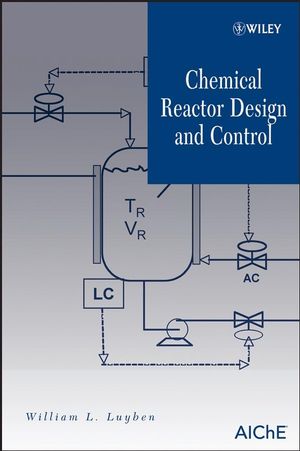Chemical Reactor Design and ControlISBN: 978-0-470-09770-0
Hardcover
436 pages
August 2007
 This is a Print-on-Demand title. It will be printed specifically to fill your order. Please allow an additional 15-20 days delivery time. The book is not returnable.
|
||||||
Preface.
Chapter 1. Reactor Basics.
1.1 Fundamentals of Reaction Equilibrium and Kinetics.
1.1.1 Power-Law Kinetics.
1.1.2 Heterogeneous Reaction Kinetics.
1.1.3 Biochemical Reaction Kinetics.
1.1.4 References.
1.2 Multiple Reactions.
1.2.1 Parallel Reactions.
1.2.2 Series Reactions.
1.3 Determining Kinetic Parameters.
1.4 Types and Fundamental Properties of Reactors.
1.4.1 Continuous Stirred-Tank Reactor.
1.4.2 Batch Reactor.
1.4.3 Tubular Plug-Flow Reactor.
1.5 Heat Transfer in Reactors.
1.6 Reactor Scale-Up.
1.7 Conclusion.
Chapter 2. Steady-State Design of CSTR Systems.
2.1 Irreversible, Single Reactant.
2.1.1 Jacket Cooled.
2.1.2 Internal Coil.
2.1.3 Other Issues.
2.2 Irreversible, Two Reactants.
2.2.1 Equations.
2.2.2 Design.
2.3 Reversible Exothermic.
2.4 Consecutive Reactions.
2.5 Simultaneous Reactions.
2.6 Multiple CSTR’s.
2.6.1 Multiple Isothermal CSTR’s in Series with Reaction A-B.
2.6.2 Multiple CSTR’s in Series with Different Temperatures.
2.6.3 Multiple CSTR’s in Parallel.
2.6.4 Multiple CSTR’s with Reversible Exothermic Reactions.
2.7 Auto-Refrigerated Reactor.
2.8 Aspen Aspen Simulation of Types of Tubular Reactors.
6.11 Plantwide Control of Methanol Process.
6.11.1 Chemistry and Kinetics.
6.11.2 Process Description.
6.11.3 Steady-State Aspen



